|
Search, browse, and study this dictionary to learn more about the early American, Christian language. 
 1828.mshaffer.com › Word [column]
1828.mshaffer.com › Word [column]
COLUMN, n. 1. In architecture, a long round body of wood or stone, used to support or adorn a building, composed of a base, a shaft and a capital. The shaft tapers from the base, in imitation of the stem of a tree. There are five kinds or orders of columns. 1. The Tuscan, rude, simple and massy; the highth of which is fourteen semidiameters or modules, and the diminution at the top from one sixth to one eighth of the inferior diameter. 2. The Doric, which is next in strength to the Tuscan, has a robust, masculine aspect; its highth is sixteen modules. 3. The Ionic is more slender than the Tuscan and Doric; its highth is eighteen modules. 4. The Corinthian is more delicate in its form and proportions, and enriched with ornaments; its highth should be twenty modules. 5. The Composite is a species of the Corinthian, and of the same highth.In strictness, the shaft of a column consists of one entire piece; but it is often composed of different pieces, so united, as to have the appearance of one entire piece. It differs in this respect from a pillar, which primarily signifies a pile, composed of small pieces. But the two things are unfortunately confounded; and a column consisting of a single piece of timber is absurdly called a pillar or pile.2. An erect or elevated structure resembling a column in architecture; as the astronomical column at Paris, a kind of hollow tower with a spiral ascent to the top; gnomonic column, a cylinder on which the hour of the day is indicated by the shadow of a style; military column, among the Romans; triumphal column; &c.3. Any body pressing perpendicularly on its base, and of the same diameter as its base; as a column of water, air or mercury.4. In the military art, a large body of troops drawn up in order; as a solid column.5. Among printers, a division of a page; a perpendicular set of lines separated from another set by a line or blank space. In manuscript books and papers, any separate perpendicular line or row of words or figures. A page may contain two or more columns; and in arithmetic, many columns of figures may be added.
|
Evolution (or devolution) of this word [column]
| 1828 Webster | 1844 Webster | 1913 Webster |
|---|
COLUMN, n. 1. In architecture, a long round body of wood or stone, used to support or adorn a building, composed of a base, a shaft and a capital. The shaft tapers from the base, in imitation of the stem of a tree. There are five kinds or orders of columns. 1. The Tuscan, rude, simple and massy; the highth of which is fourteen semidiameters or modules, and the diminution at the top from one sixth to one eighth of the inferior diameter. 2. The Doric, which is next in strength to the Tuscan, has a robust, masculine aspect; its highth is sixteen modules. 3. The Ionic is more slender than the Tuscan and Doric; its highth is eighteen modules. 4. The Corinthian is more delicate in its form and proportions, and enriched with ornaments; its highth should be twenty modules. 5. The Composite is a species of the Corinthian, and of the same highth.In strictness, the shaft of a column consists of one entire piece; but it is often composed of different pieces, so united, as to have the appearance of one entire piece. It differs in this respect from a pillar, which primarily signifies a pile, composed of small pieces. But the two things are unfortunately confounded; and a column consisting of a single piece of timber is absurdly called a pillar or pile.2. An erect or elevated structure resembling a column in architecture; as the astronomical column at Paris, a kind of hollow tower with a spiral ascent to the top; gnomonic column, a cylinder on which the hour of the day is indicated by the shadow of a style; military column, among the Romans; triumphal column; &c.3. Any body pressing perpendicularly on its base, and of the same diameter as its base; as a column of water, air or mercury.4. In the military art, a large body of troops drawn up in order; as a solid column.5. Among printers, a division of a page; a perpendicular set of lines separated from another set by a line or blank space. In manuscript books and papers, any separate perpendicular line or row of words or figures. A page may contain two or more columns; and in arithmetic, many columns of figures may be added. |
COL'UMN, n.1 [col'um; L. columna, columen; W. colov, a stalk or stem, a prop; colovyn, a column; Ir. colbh, a stalk, a column; Arm. coulouenn; Fr. colonne; It. colonna; Sp. columna; Port. columna, or coluna. This word is from the Celtic, signifying the stem of a tree, such stems being the first columns used. The primary sense is a shoot, or that which is set.]- In architecture, a long round body of wood or stone, used to support or adorn a building, composed of a base, a shaft and a capital. The shaft tapers from the base, in imitation of the stem of a tree. There are five kinds or orders of columns. 1. The Tuscan, rude, simple and massy; the highth of which is fourteen semidiameters or modules, and the diminution at the top from one sixth to one eighth of the inferior diameter. 2. The Doric, which is next in strength to the Tuscan, has a robust, masculine aspect; its highth is sixteen modules. 3. The Ionic is more slender than the Tuscan and Doric; its highth is eighteen modules. 4. The Corinthian is more delicate in its form and proportions, and enriched with ornaments; its highth should be twenty modules. 5. The Composite is a species of the Corinthian, and of the same highth. – Encyc.
In strictness, the shaft of a column consists of one entire piece; but it is often composed of different pieces, so united, as to have the appearance of one entire piece. It differs in this respect from a pillar, which primarily signifies a pile, composed of small pieces. But the two things are unfortunately confounded; and a column consisting of a single piece of timber is absurdly called a pillar or pile.
- An erect or elevated structure resembling a column in architecture; as the astronomical column at Paris, a kind of hollow tower with a spiral ascent to the top; gnomonic column, a cylinder on which the hour of the day is indicated by the shadow of a style; military column, among the Romans; triumphal column, &c.
- Any body pressing perpendicularly on its base, and of the same diameter as its base; as, a column of water, air or mercury.
- In the military art, a large body of troops drawn up in order; as, a solid column.
- Among printers, a division of a page; a perpendicular set of lines separated from another set by a line or blank space. In manuscript books and papers, any separate perpendicular line or row of words or figures. A page may contain two or more columns; and in arithmetic, many columns of figures may be added.
COL'UMN, n.2In botany, the aggregate stamen of a plant when the filaments are united into a tube around the styles, as in the Malvaceous plants, which have been called Columniferæ, i. e. column-bearers. The united stamens and styles of the plants of which the genus Orchis is the type, is called a column. |
Col"umn
- A kind of pillar; a
cylindrical or polygonal support for a roof, ceiling, statue,
etc., somewhat ornamented, and usually composed of base, shaft,
and capital. See Order.
- Anything resembling, in form or
position, a column in architecture; an upright body or mass; a
shaft or obelisk; as, a column of air, of water, of
mercury, etc.; the Column Vendôme; the spinal
column.
- A
body of troops formed in ranks, one behind the other; --
contradistinguished from line. Compare Ploy, and
Deploy.
|
| 1828 Webster | 1844 Webster | 1913 Webster |
|---|
Thank you for visiting!
- Our goal is to try and improve the quality of the digital form of this dictionary being historically true and accurate to the first American dictionary. Read more ...
- Below you will find three sketches from a talented artist and friend depicting Noah Webster at work. Please tell us what you think.
Divine Study
 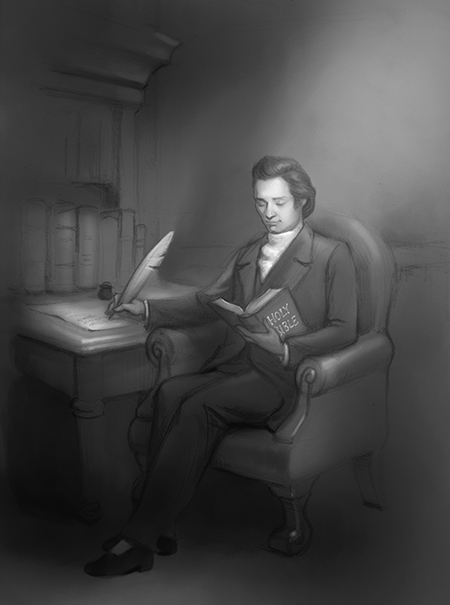
Divine Study
|
Window of Reflection
 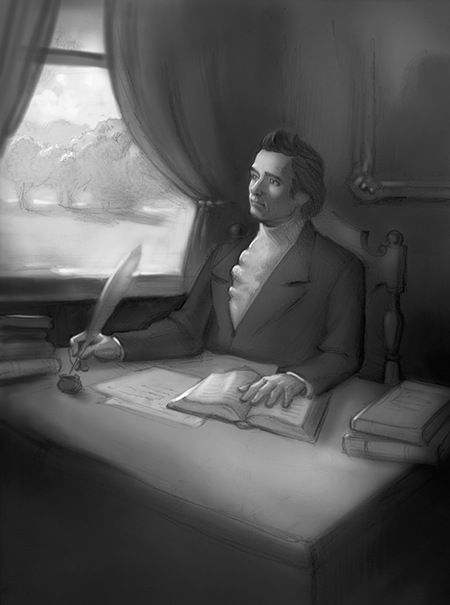
Window of Reflection
|
Enlightening Grace
 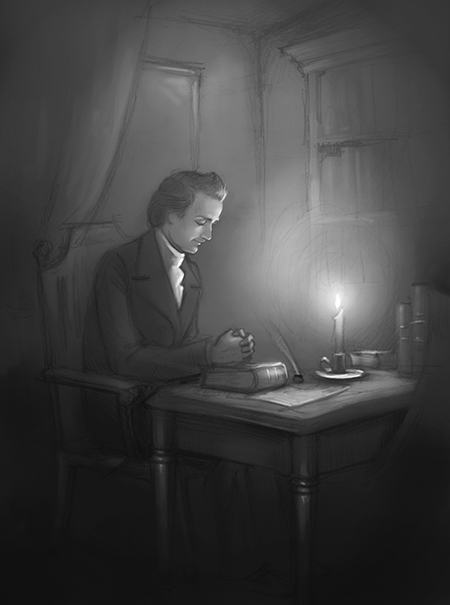
Enlightening Grace
|
136
|
884 |
101
|
961 |
169
|
991 |

Column COLUMN, noun 1. In architecture, a long round body of wood or stone, used to support or adorn a building, composed of a base, a shaft and a capital. The shaft tapers from the base, in imitation of the stem of a tree. There are five kinds or orders of columns. 1. The Tuscan, rude, simple and massy; the highth of which is fourteen semidiameters or modules, and the diminution at the top from one sixth to one eighth of the inferior diameter. 2. The Doric, which is next in strength to the Tuscan, has a robust, masculine aspect; its highth is sixteen modules. 3. The Ionic is more slender than the Tuscan and Doric; its highth is eighteen modules. 4. The Corinthian is more delicate in its form and proportions, and enriched with ornaments; its highth should be twenty modules. 5. The Composite is a species of the Corinthian, and of the same highth. In strictness, the shaft of a column consists of one entire piece; but it is often composed of different pieces, so united, as to have the appearance of one entire piece. It differs in this respect from a pillar, which primarily signifies a pile, composed of small pieces. But the two things are unfortunately confounded; and a column consisting of a single piece of timber is absurdly called a pillar or pile. 2. An erect or elevated structure resembling a column in architecture; as the astronomical column at Paris, a kind of hollow tower with a spiral ascent to the top; gnomonic column a cylinder on which the hour of the day is indicated by the shadow of a style; military column among the Romans; triumphal column; etc. 3. Any body pressing perpendicularly on its base, and of the same diameter as its base; as a column of water, air or mercury. 4. In the military art, a large body of troops drawn up in order; as a solid column 5. Among printers, a division of a page; a perpendicular set of lines separated from another set by a line or blank space. In manuscript books and papers, any separate perpendicular line or row of words or figures. A page may contain two or more columns; and in arithmetic, many columns of figures may be added. |

|
| Hard-cover Edition |
331 |
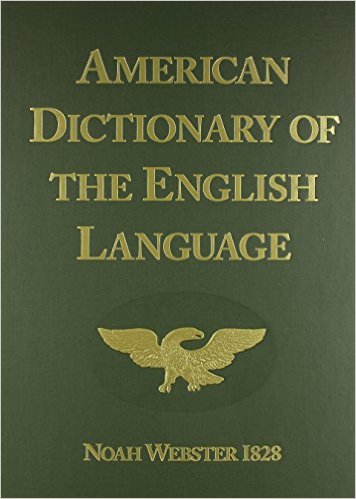 |
511 |
|
| Compact Edition |
312 |
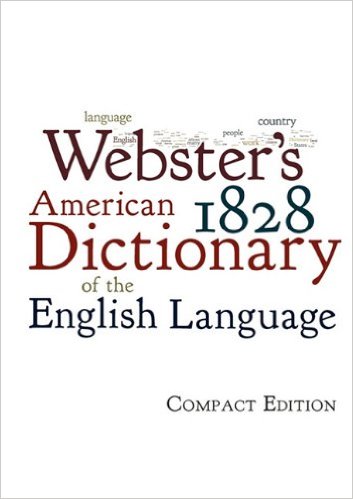 |
217 |
|
| CD-ROM |
264 |
 |
179 |
|
* As a note, I have purchased each of these products. In fact, as we have been developing the Project:: 1828 Reprint, I have purchased several of the bulky hard-cover dictionaries. My opinion is that the 2000-page hard-cover edition is the only good viable solution at this time. The compact edition was a bit disappointing and the CD-ROM as well. |
| [ + ] |
| Add Search To Your Site |
|
|
|
 1828.mshaffer.com › Word [column]
1828.mshaffer.com › Word [column]
